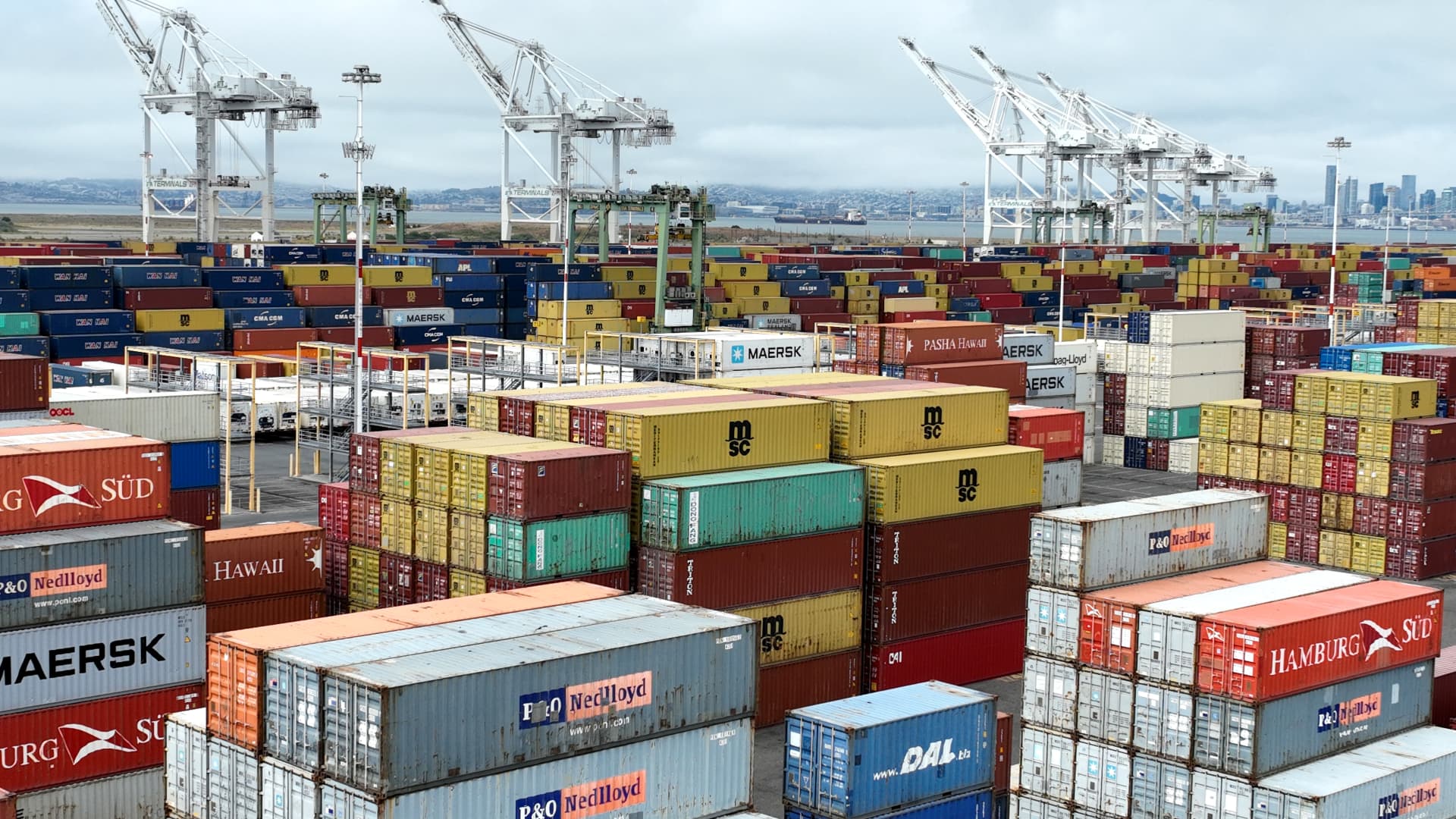The queue of vessels waiting to unload goods at the Port of Los Angeles, North America’s busiest container port, has fallen 80% since the start of the year as global container prices continue to slide, pointing to more easing in supply chain disruptions.
The backlog of vessels waiting outside Los Angeles has fallen from a record high of 109 to 20 and the port moved 876,611 twenty-foot equivalent units (TEUs) in June in its best record in over 100 years.
“We’re going box for box with the record that we set for the first half just last year. So the cargo keeps moving. And the efficiencies of getting that cargo from the ship to shore by rail and truck continues to improve,” Port of Los Angeles Executive Director Gene Seroka told CNBC’s “Squawk Box Asia” on Friday.
“We reduced that backlog of ships since the beginning of the year … now we want to get that number to zero.”
The increased efficiency is a contrast to the delays triggered by the pandemic in 2020 and 2021.
We’ve got to get the cargo picked up at the inland rail facilities by our importers much quicker than they’ve been doing thus far.
Gene Seroka
Port of Los Angeles executive director
At the height of supply chain crisis, these 100 odd vessels idled outside Los Angeles and Long Beach, waiting to unload. Before Covid-19, little wait time was needed for a berth. The pandemic also hurt domestic transportation as a result of trucker shortages due to Covid-19 infections.
While improved, conditions have not returned to pre-Covid levels and more improvements are needed, in particular the delivery of goods inland after the vessels have unloaded, Seroka said.
“We’ve got to get the cargo picked up at the inland rail facilities by our importers much quicker than they’ve been doing thus far,” he said.
“That’ll help the Western railroads get the equipment engine power and cruise back here to Los Angeles and keep evacuating this cargo at a faster pace than we witnessed so far.”
Seroka said the trucker strike protesting California’s new “gig worker” law at the Port of Oakland should not affect the improved pace set so far.
In an aerial view, shipping containers sit idle at the Port of Oakland on July 21, 2022 in Oakland, California. Truckers protesting California labor law Assembly Bill 5 (AB5) have shut down operations at the Port of Oakland after blocking entrances to container terminals at the port for the past four days. An estimated 70,000 independent truckers in California are being affected by the state AB5 bill, a gig economy law passed in 2019 that made it difficult for companies to classify workers as independent contractors instead of employees. The port shut down is contributing to ongoing supply-chain issues.
Justin Sullivan | Getty Images
The easing bottlenecks on the West Coast come as container prices continue to fall from their pandemic records.
Port lockdowns and a shortage of containers in 2020 and 2021 contributed to skyrocketing leasing costs. But now there is an oversupply of containers and prices have been falling since September.
“The current situation of oversupply of containers is a result of a series of reactionary market disruptions that began soon after the outbreak of the pandemic in early 2020,” logistics platform Container xChange chief executive Christian Roeloffs said in a new analysis this week.
“With the rise in demand, congestion at ports increased and the container capacity was held up for a considerably long period of time. This led to the panic ordering of new boxes at record levels,” he said.
“With time, as markets reopen and demand softens, the oversupply is a natural outcome of demand-supply forces balancing at new levels.”
According to Drewry’s recently published container leasing report, the global pool of shipping containers increased by 13% to almost 50 million TEUs in 2021. There is now a surplus of 6 million TEUs globally.
While more containers bring welcomed relief for those paying for freight, Roeloffs said freight prices will not fall quickly as disruptions, while eased, remain acute.
Economic shifts such as cooler demand in response to monetary policy and inflation will also contribute to fresh supply chain disruptions.
“The main factor that has driven up [freight] prices has been a supply-side crunch over the past two years because of lengthening turnaround times of containers … that still holds true,” Roeloffs said.

